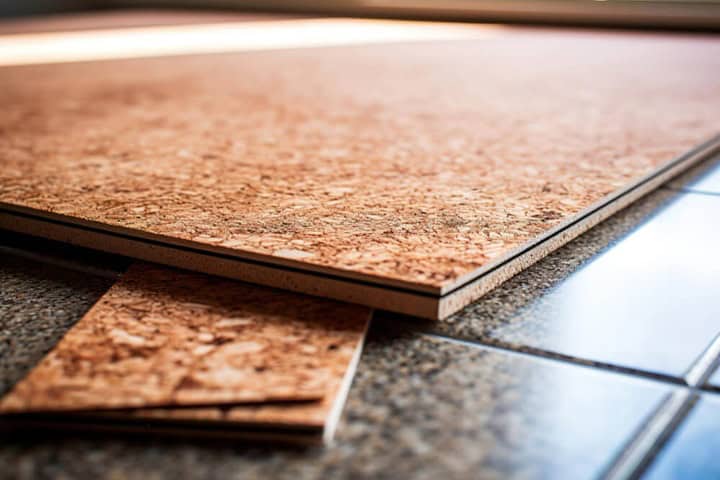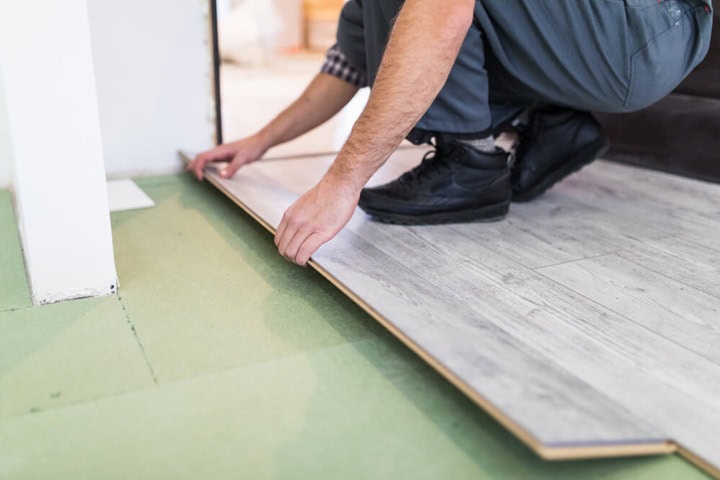Not sure if you need underlay for your underfloor heating? It’s one of the most common questions homeowners and installers ask.
When setting up electric underfloor heating, many wonder whether an underlay is necessary, and if so, which type to use. In this article, we will break down when underlay is needed, what kinds are compatible, and how the right choice can affect system performance, as well as how it can be integrated into your subflooring. Whether you’re installing heating beneath laminate, vinyl, or tiles, we’ll explain how underlay fits into the bigger picture of comfort and efficiency.
Key Points:
- Underlay for electric underfloor heating helps improve energy efficiency and heat transfer.
- Not all flooring types require underlay, but many benefit from it.
- Choose an underlay with a low TOG rating to allow heat to pass through effectively.
- Look for an underlay designed specifically for underfloor heating systems.
- Installing the wrong type of underlay can reduce performance or even cause overheating.
Do You Need Underlay for Underfloor Heating?
Underfloor heating is now a common choice for homes, new builds, and even retrofits — and for good reason. Here are some of the most recognisable benefits of underfloor heating:
- They free up wall space.
- Underfloor heating systems spread heat more evenly across its given zone. It is possible to opt for single zone underfloor heating, as well as multi zone heating control systems for several room spaces.
- These systems create a more comfortable and stable living environment.
- At least 40% more efficient than average central heating systems such as radiators, although it is still possible to combine underfloor heating and radiators together too.
- Multiple variations of underfloor heating kits are available to purchase, including water and electric.
But when installing electric underfloor heating, it’s natural to wonder if you also need to use an underlay. The answer depends on your flooring type, system setup, and how you want the heating to perform.
What Is Underfloor Heating?
Underfloor heating works by warming the floor surface from below. The heat then rises gently into the room, rather than blowing hot air like traditional radiators. There are two main types:
Both can be installed under a wide range of flooring, including:
- Laminate underfloor heating
- Vinyl flooring with underfloor heating
- Carpets on underfloor heating
- Underfloor heating on floorboards
- Tile, stone, porcelain or ceramic (the best tiles for underfloor heating)
- Underfloor heating on concrete floors
Each of these has its own compatibility requirements when it comes to underlay.
Why Might You Need Underlay?
The purpose of underlay underfloor heating isn’t just comfort underfoot. A good underlay can:
- Prevent heat loss into the subfloor
- Reduce noise from foot traffic
- Protect your floor covering
- Absorb some moisture
- Provide a cushioning effect
For electric underfloor heating kits, the underlay for electric underfloor heating is often made from materials like thin foam or fibreboard, designed to allow heat to pass through without getting trapped. These are usually labelled as “low TOG” or underlay compatible with underfloor heating.
When Underlay Is (and Isn’t) Needed
Of course, there are some instances when installing underfloor heating whereupon underlay is not required. Here is when this will be the case:
- Laminate or vinyl: Underlay is often recommended to improve insulation and comfort. Always choose a specific electric underfloor heating underlay that’s marked as safe for use with heating systems.
- Carpet: Requires both a low TOG underlay and a carpet that allows heat transfer.
- Tiles or stone: These materials have excellent thermal conductivity and usually don’t require underlay — though some people still choose to add a thin layer for added comfort or noise control.
Remember: not all underlays are safe to use. Standard underlays may trap heat, leading to system inefficiency or damage. Always choose a product clearly labelled for use with underfloor heating.
To help, here’s a comparison table:
| Flooring Type | Underlay Needed? | Recommended Underlay Type | Key Notes |
| Laminate | ✔️ Yes | Low TOG foam or fibreboard underlay | Always use underlay labelled for underfloor heating; helps with insulation |
| Vinyl | ✔️ Yes | Thin foil-backed underlay | Choose breathable underlay with perforations to avoid trapping heat |
| Carpet | ✔️ Yes | Low TOG felt/PU underlay (combined TOG < 2.5) | Carpet and underlay must both allow heat to pass through |
| Engineered Wood | ✔️ Optional | Breathable, thin underlay | Use floating floor method; avoid thick insulation layers |
| Tile/Stone | ❌ No | Not required (but insulation boards may be used) | Use tile backer boards or decoupling membranes, not traditional underlay |
| Concrete Floors | ✔️ Recommended | Insulation boards (e.g. XPS or PIR) below heating mat | Prevents heat loss downwards and speeds up heat-up times |
How to Install Underlay for Electric Underfloor Heating

Installing underlay for electric underfloor heating is a simple but important step in getting the best results from your heating system. While not every flooring type needs it, where it is required, proper installation will help with heat flow, protect your floor, and make the space more comfortable to walk on. Here’s how to install it correctly across a range of common floor finishes.
General Tips Before You Start
Before laying any electric underfloor heating underlay, make sure:
- The subfloor is clean, dry, and flat.
- You’ve planned your heating layout and marked fixed furniture areas.
- You’ve checked the manufacturer’s instructions for both the underlay and heating mat.
Installing Underlay Under Laminate and Vinyl

Laminate and vinyl are popular choices for modern homes, and both usually need a thin underlay layer when laid over electric heating. Here’s how to install it:
- Measure and cut the underlay to fit the room, leaving a small gap around the edges for expansion.
- Lay the underlay flat, ensuring any foil side (if included) faces upwards to reflect heat back into the flooring.
- Secure the edges with a low-tack tape to prevent movement when installing the heating mats or cables.
- Place the heating mat or cable directly on top of the underlay according to the system’s layout plan.
- Install a floor sensor, which should sit between two heating wires and be embedded into the underlay as per the heating system instructions.
- Lay the laminate or vinyl as usual on top, making sure to leave expansion gaps and follow flooring-specific instructions.
Expert Tip: Most electric underfloor heating underlay for laminate or vinyl has small perforations or grooves to allow heat to travel through efficiently.
Using Underlay with Carpet
Carpet can work with electric underfloor heating, but it requires careful planning:
- Both the carpet and underlay underfloor heating must have low TOG values (combined under 2.5)
- Use a specific low-profile underlay — thick foam underlay will block heat
- Underlay is installed first, directly onto the subfloor, followed by the heating mat
- A layer of carpet gripper rods should be used around the edge to hold the carpet in place without compressing the heating wires
- Avoid dense rubber or felt underlay types, which trap heat and reduce the efficiency of the system.
Installing Underlay with Engineered Wood
Engineered wood is another flooring type where a thin underlay for electric underfloor heating can be used:
- Choose a breathable, thin underlay that allows movement but won’t insulate against the heat
- Lay the underlay in strips and tape the seams
- Avoid overlapping to keep the floor level
- Float the engineered wood boards on top, allowing for expansion
Should You Use Underlay Under Tiles?
In most cases, tiles don’t need underlay. Their natural conductivity makes them ideal for electric heating. However, some people still add a decoupling membrane or insulating layer like backer boards to help with heat-up times. These aren’t traditional underlays but can act similarly.
Correct installation of underlay underfloor heating improves efficiency and comfort, especially for soft flooring types. Always follow the guidelines that come with your heating system to make sure everything works as expected. Contact us if you need further advice from the experts.
Underfloor Heating Trade Supplies: Your Entrusted Suppliers
At Underfloor Heating Trade Supplies, we stock a wide range of products to support your installation — whether you’re laying electric underfloor heating beneath laminate, vinyl, carpet, or other flooring surfaces, we have the tools and advice you need for a smooth, risk-free installation.
Our underfloor heating insulation boards, for example, help reduce heat loss in homes and improve efficiency, while our full electric underfloor heating systems are easy to install with compatible underlays. Not sure what surface you’re working with? You can even explore underfloor cooling for year-round comfort.
FAQs
What kind of underlay is suitable for electric underfloor heating?
You need thermal insulation boards or foil underlay designed for use with underfloor heating. These are typically made from XPS (extruded polystyrene), PIR (polyisocyanurate), or similar heat-resistant materials.
What are the benefits of using proper underlay?
Reduced energy consumption
Faster heat-up times
Even heat distribution
Lower long-term running costs
Improved performance of the entire system
What happens if I don’t use underlay or insulation boards?
Without proper insulation, much of the heat generated will be lost downward, leading to higher running costs, longer warm-up times, and less efficient heating overall.
Sources
Funell, A., (2023) Understanding TOG Ratings for Carpets. Flooring Hut. [online] Available at: https://www.flooringhut.co.uk/blog/2023/07/16/understanding-tog-ratings-for-carpets/ [accessed 13/06/2025]

